
- Homepage
- Brand
- Bosch (8)
- Clock (16)
- Dr Pepper (3)
- Electric (9)
- G.e.c (3)
- Ge General Electric (24)
- Ge, General Electric (6)
- General (81)
- General Electric (1024)
- General Electric Co. (4)
- General Electric Ge (9)
- Reddy Kilowatt (6)
- Tamiya (12)
- Team Associated (7)
- Telechron (40)
- Universal (8)
- Vintage (5)
- Western Electric (4)
- Zenith (5)
- Zippo (6)
- Other (2160)
- Finish
- Material
- Bakelite (16)
- Brass (100)
- Brass, Cast Iron (18)
- Brass, Metal (13)
- Brass, Metal, Steel (4)
- Brass, Steel (4)
- Cast Iron (35)
- Cast Iron, Metal (4)
- Chrome (18)
- Glass (22)
- Glass, Metal (5)
- Iron (12)
- Metal (245)
- Metal, Plastic (32)
- Metal, Steel (16)
- Plastic (105)
- Plastic, Metal (4)
- Stainless Steel (6)
- Steel (31)
- Wood (16)
- Other (2734)
- Power Source
- Shape
- Type
- Alarm Clock (52)
- Blower / Utility (11)
- Body Shells (10)
- Boombox (37)
- Box (29)
- Clock Radio (53)
- Cooking Ranges (12)
- Desk Clock (59)
- Fan (18)
- Floor (13)
- Pedestal / Standing (18)
- Pedestal Fan (8)
- Search / Spot Light (10)
- Standalone Mixer (7)
- Table / Desk (378)
- Table Lamp (10)
- Toaster Oven (28)
- Twin (14)
- Vacuum Tube (9)
- Wall Clock (221)
- Other (2443)
Vintage Authentic 36 Nipper RCA Plastic Dog General Electric 3' x 2'2 c 1970
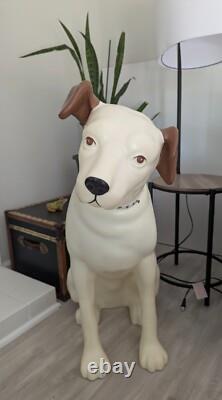
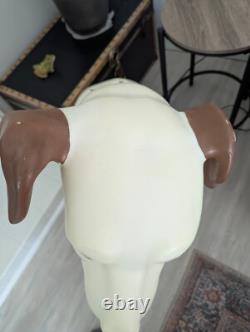
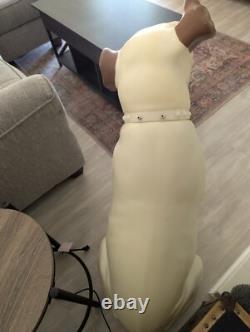
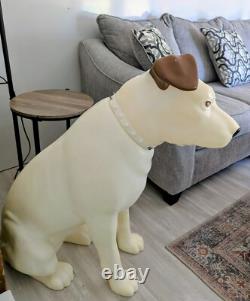
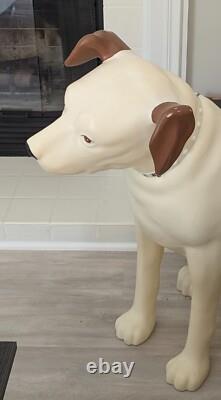
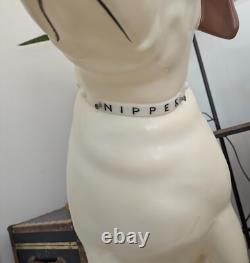
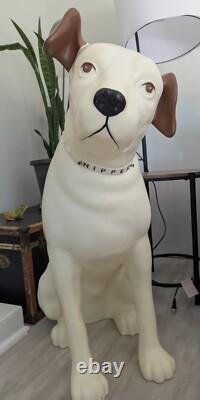


Loyally sat and listened attentively to my drumming for years. Nipper needs a new musician to quietly judge and inspire. Vintage 36 Nipper RCA Plastic Dog is a classic piece from General Electric, dating back to the early 1970s. Standing at an impressive 3 feet tall, this iconic figurine has been repainted with some scuff marks, as shown in the pictures. Size: 3' x 2'2.
Some scratches on the bottom from moving around, but in good condition for it's age, plastic mold has no noticeable cracks. A proud addition to any collection, this authentic piece by Victor Phonographs captures the nostalgia and essence of a bygone era.September 1895 was a British. He is best known as the subject of the 1898 painting. Painted posthumously by his owner. That went on to become a international. For consumer electronics, record labels and entertainment retailers.
Nipper was born in 1884 in. England, and died in September 1895. Although most early sources suggest that he was a. He was named Nipper because he would often "nip" at the backs of visitors' legs.
Nipper originally lived with his owner, Mark Henry Barraud, in the Prince's Theatre where Barraud was a scenery designer. When Barraud died in 1887, his brothers Philip and. Took care of the dog, then Francis took Nipper to Liverpool, and later to Mark's widow in. Nipper died of natural causes in 1895 and was buried in Kingston upon Thames at Clarence Street, in a small park surrounded by.
In 1898, three years after Nipper's death. The brother of Nipper's original owner, painted a picture of the dog listening intently to an.
Thinking the Edison-Bell Company located in New Jersey, United States, might be interested in the painting, he offered it to James E. Hough, Edison-Bell's British representative, who promptly replied, "Dogs don't listen to phonographs". On 31 May 1899, Barraud visited the Maiden Lane offices of. To inquire about borrowing a brass horn to replace the original black horn in order to brighten up the painting.
When Gramophone Company founder and manager William Barry Owen was shown the painting, he suggested that if the artist painted out the cylinder machine and replaced it with a. Barraud gladly obliged and the phrase His Master's Voice.
The original oil painting hung in The Gramophone Company's headquarters, and then in EMI's boardroom in. It appears that after the image was copyrighted, two employees of the Gramophone Company, William Sinkler Darby and Theodore Bernard Birnbaum, recorded a. In 1900 entitled'Nipper runs amok!A similar looking dog was used to act as Nipper. Used Nipper's likeness on its sound equipment, and created the. Record label in 1909, as well as the.
The Gramophone Company's American affiliate the.

